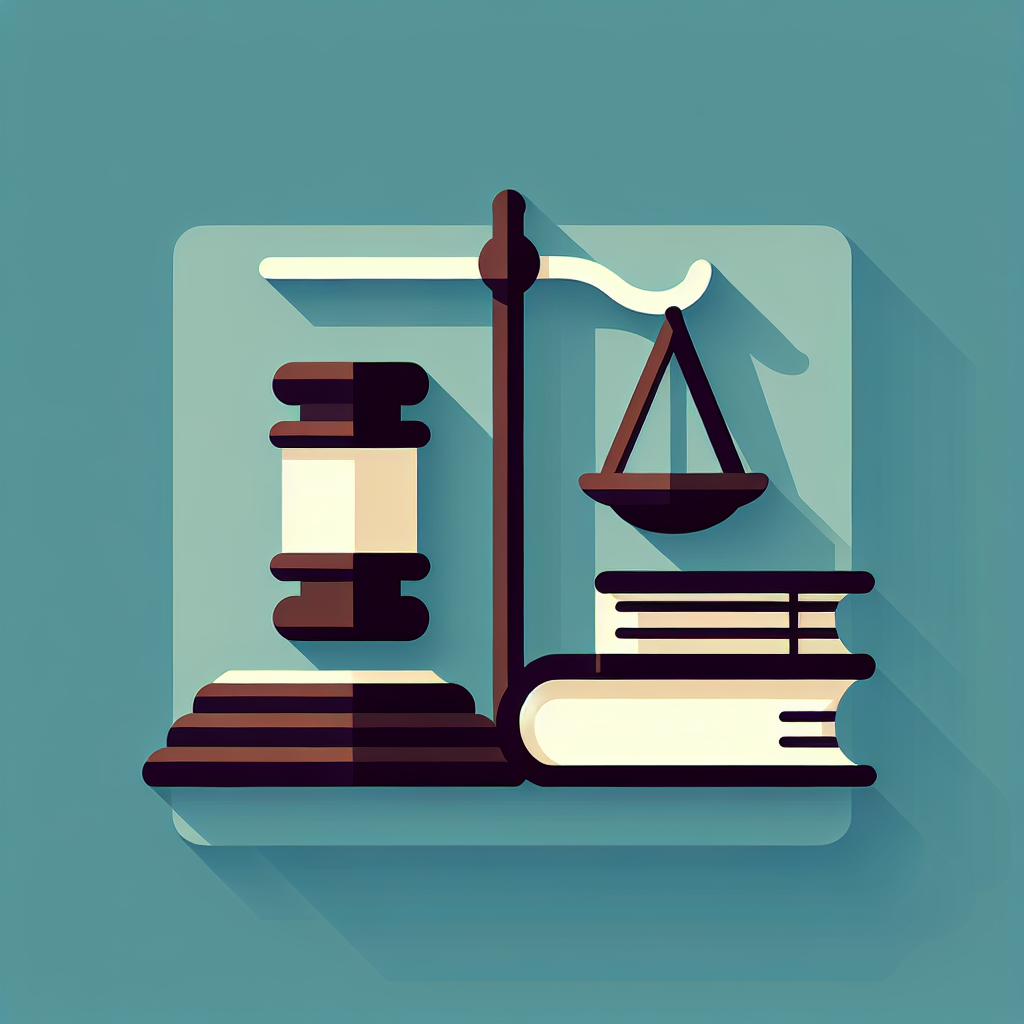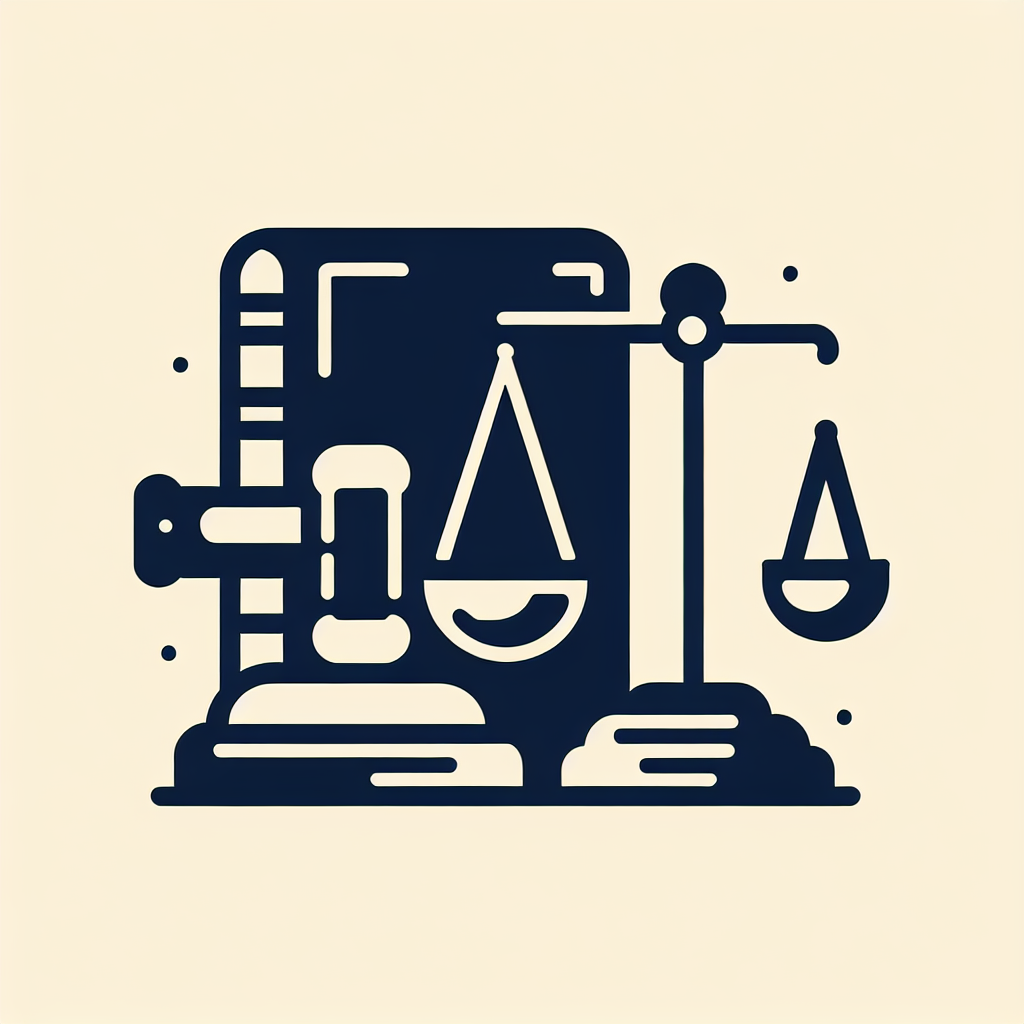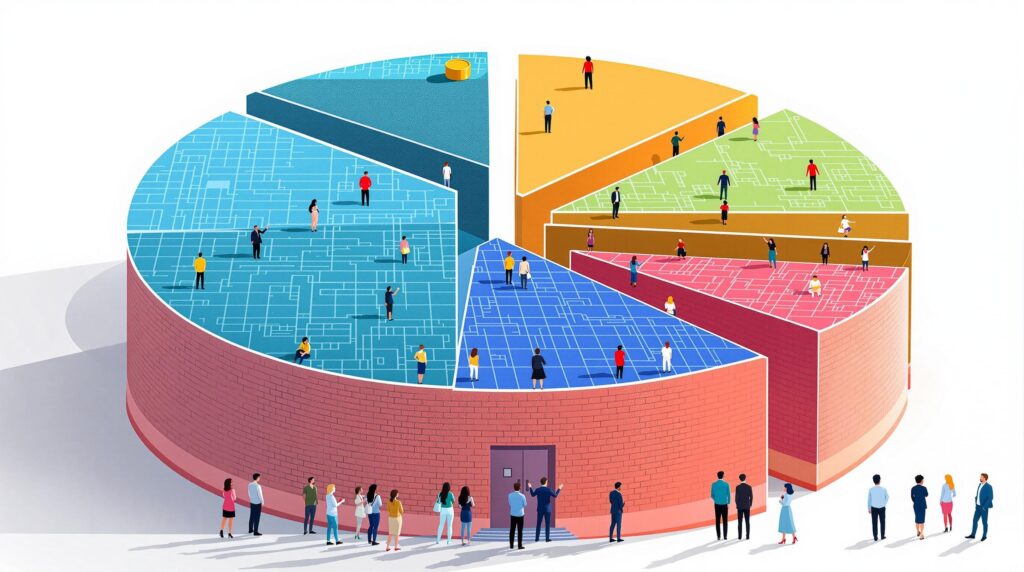[rev_slider alias=”slider-1″][/rev_slider]
Introduction to Layer 1 Blockchains: Pioneering the Future of Decentralization
As we delve into the dynamic world of blockchain technology, understanding the foundational structures that form its backbone is vital. At the core of this transformative tech landscape are Layer 1 blockchains, essential for cultivating a decentralized digital ecosystem that underpins various cryptocurrencies and digital assets. But what exactly are Layer 1 blockchains, and why are they critical in shaping the future of decentralized applications?
Essence of Layer 1 Blockchains: In the complex chain of blockchain operations, Layer 1 solutions are effectively the ground-level frameworks. These blockchains act as the main ledger systems that validate and record all transactions independently without needing another underlying network. Such platforms include well-known names like Bitcoin, Ethereum, and many others that provide the fundamental tools for building decentralized applications (dApps).
Why the focus on decentralization? Decentralization shifts control and influence from a single point of authority (such as a bank or government) to a distributed network, enhancing transparency, security, and trust among users.
Advancing Through Technological Innovations and User Adoption
Layer 1 blockchains are continually evolving. They not only support digital currencies but also facilitate smart contracts. Smart contracts automate agreements without intermediaries, streamlining operations while ensuring deal terms’ fulfillment. The innovation doesn’t stop there; advancements in Layer 1 technology have broadened capabilities, such as:
- Scalability Solutions: Innovations like sharding (dividing the network into smaller, easier to manage pieces) and consensus algorithm improvements help Layer 1 blockchains handle more transactions. This is crucial as blockchain adoption grows.
- Interoperability Features: Some Layer 1 blockchains are being designed to interact seamlessly with other blockchains. This interoperability is pivotal for creating a universally connected blockchain ecosystem.
- Enhanced Security Protocols: As the backbone of decentralized finance (DeFi) and other applications, prioritizing robust security protocols is non-negotiable for Layer 1 blockchains.
The adoption rate of these technologies is a testament to their potential. With more businesses and sectors leveraging blockchain for applications beyond cryptocurrencies—like supply chain management, healthcare, and finance—the foundational Layer 1 blockchains are set to revolutionize industries. This wide-scale adoption not only validates the value and reliability of Layer 1 solutions but also emphasizes their role in a decentralized future.
Key Players in the Layer 1 Blockchain Arena
Several key players have emerged as pioneers in the Layer 1 blockchain space, each contributing to the ecosystem in unique ways:
- Bitcoin: The original cryptocurrency, Bitcoin, remains a significant player due to its pioneering status and continued relevance in the crypto market.
- Ethereum: Known for its flexible smart contract capabilities, Ethereum has driven innovations in DeFi and dApps, though it faces challenges like network congestion and high transaction fees.
- Cardano, Polkadot, and Solana: These newer entrants have gained attention by addressing some of the limitations of earlier blockchains, such as scalability and speed, striving to offer more efficient transaction solutions.
The journey of Layer 1 blockchains is far from over. The ongoing exploration into Layer 1 solutions holds boundless potential to overhaul our digital interaction landscapes drastically. By understanding their key roles and capabilities, we can better appreciate how these technologies are paving the way for a more secure, transparent, and equitable digital future.
In conclusion, Layer 1 blockchains form the essential scaffolding for the expanding universe of decentralized applications. They are not just advancing blockchain technology but are also pushing the boundaries of how we perceive and interact with digital data. As they evolve, continued innovation and user engagement will be critical to their success and, by extension, to the broader digital economy.
Comparative Insights: Layer 1 vs Layer 2 Blockchain Solutions
In the rapidly evolving world of blockchain technology, understanding the differences and interplay between Layer 1 and Layer 2 solutions is crucial for anyone involved in this industry. These foundational technologies not only facilitate the blockchain’s functionality and efficiency but also its potential for scalability and wider application. So, what distinguishes Layer 1 from Layer 2 solutions, and why are they critical to the future of blockchain technology? Let’s delve deeper.
Understanding Layer 1 Blockchains
Layer 1 blockchains form the backbone of the cryptocurrency network architecture. These are the underlying main networks, such as Ethereum, Bitcoin, and Cardano, which validate and record all transactions in their respective ledgers. Think of Layer 1 as the ground floor of a building – it is the original framework that supports all operations.
Layer 1 solutions are inherent solutions that change the fundamental protocol itself to improve scalability.
Improvements and innovations in Layer 1 technology typically involve changes in the consensus algorithm or sharding. For instance, changing from Proof of Work (PoW) to Proof of Stake (PoS) can significantly reduce energy consumption and increase transaction speed.
The Role of Layer 2 Solutions
Layer 2 solutions, on the other hand, are protocols built on top of the Layer 1 blockchain. They are designed to help scale applications by handling transactions off the main ledger (Layer 1), thereby decongesting and speeding up the network.
Examples of Layer 2 solutions include Lightning Network for Bitcoin, and Plasma and Optimistic Rollups for Ethereum. These solutions enable higher transaction throughput without compromising the decentralized security features of the underlying blockchain.
Layer 2 solutions act like a new set of floors built upon the foundation or Layer 1, designed to increase the building’s capacity efficiently without altering its foundation.
Comparing Scalability: Layer 1 vs. Layer 2
Scalability remains one of the greatest challenges faced by blockchain technology. Layer 1 solutions improve scalability through changes in the protocol or networking rules. However, these changes are often complex and require consensus from all network participants, which can be a slow and challenging process.
Layer 2 solutions provide scalability by offloading the network processing tasks from the main chain to secondary frameworks. This method can swiftly adapt to changes and innovations, which is especially beneficial for applications needing high transaction throughput such as online games and financial services.
Synergy Between Layer 1 and Layer 2
While Layer 1 and Layer 2 solutions are often viewed as competitors, they are actually complementary. Layer 1 provides the secure, decentralized base necessary for Layer 2 solutions to operate effectively. Meanwhile, Layer 2 enhances the usability and scalability of Layer 1 blockchains, allowing them to support more complex applications and a higher volume of transactions.
Interoperation between the two layers is also key. Solutions that offer smooth interaction between Layer 1 and Layer 2 will likely lead the forefront in blockchain development. Projects that integrate multiple Layer 2 solutions with Layer 1 blockchains can reduce fragmentation, improve user experience and expand use cases.
Understanding the distinction and collaboration between Layer 1 and Layer 2 solutions is pivotal for anyone looking to develop, invest in, or use blockchain technologies.
Conclusion
As blockchain technology continues to mature, the development of both Layer 1 and Layer 2 solutions will play critical roles in its evolution. Whether improving upon the foundational Layer 1 networks or enhancing capacity and speed through Layer 2 developments, both layers are essential to realizing the full potential of blockchains in revolutionizing various industries.
Thus, staying informed about these technologies not only prepares us for a decentralized future but also equips us with the knowledge to make strategic decisions in a blockchain-driven world.
[rev_slider alias=”text-call-cta”][/rev_slider]
Leading Layer 1 Blockchains: A Closer Look at Market Leaders
In the rapidly evolving world of blockchain technology, Layer 1 solutions stand at the forefront of innovation and scalability. These foundational networks form the backbone of the blockchain ecosystem, supporting various decentralized applications and smart contracts while continuously enhancing their protocols to meet increasing demands. Here we delve into the intricacies of these pioneering blockchains, highlighting their unique features, technology stacks, and the pivotal role they play in shaping the future of decentralization.
What is a Layer 1 Blockchain?
Layer 1 Blockchain: These are the mainnets that execute and finalize transactions without the need for another underlying network. They improve scalability and security through their own blockchain architecture and consensus algorithms.
Several Layer 1 blockchains have emerged as leaders in the industry, leveraging cutting-edge technology to address common challenges such as network congestion, high transaction fees, and interoperability issues. We explore some of the top contenders in this space, each distinguished by their innovative approaches and community-driven initiatives.
Ethereum (ETH)
Known as the pioneer of smart contracts, Ethereum has been a dominant force in the cryptocurrency world. Its transition from proof-of-work (PoW) to proof-of-stake (PoS) through its ‘Ethereum 2.0’ upgrade aims to enhance scalability, security, and sustainability. This shift not only reduces the energy consumption drastically but also opens the door for sharding, which promises to significantly improve the transaction throughput by splitting the network into smaller, more manageable pieces.
Bitcoin (BTC)
While primarily known as a digital currency, Bitcoin also serves as a Layer 1 blockchain that has maintained its position as the leader in market capitalization. Bitcoin’s approach to scalability includes third-party Layer 2 solutions like the Lightning Network. However, its underlying security and decentralized proof-of-work consensus mechanism continue to set a high standard in the industry.
Cardano (ADA)
Cardano distinguishes itself with a research-driven approach to design and development. Often touted as an ‘Ethereum killer,’ it was one of the first to adopt a proof-of-stake consensus mechanism. Cardano focuses on sustainability, interoperability, and regulatory compliance, making it appealing not only to technophiles but also to enterprises and governments seeking to adopt blockchain technology responsibly.
Solana (SOL)
Solana has gained immense popularity due to its incredibly fast transaction speeds and low fees. By employing a unique consensus mechanism known as Proof of History (PoH), combined with the underlying PoS, Solana offers a highly efficient and scalable infrastructure. This makes it a favorite among developers looking to build decentralized applications that require high throughput and minimal latency.
Polkadot (DOT)
Polkadot introduces a novel concept of ‘parachains,’ which are diverse blockchains that run in parallel within the Polkadot ecosystem. This multi-chain approach not only enhances scalability by processing transactions in parallel but also fosters interoperability amongst different blockchains, allowing them to exchange information and functionality in a secure manner.
As the blockchain landscape continues to mature, the competition among Layer 1 solutions grows fiercer. Innovating and adapting are imperative for these networks to maintain relevance and lead in a market driven by rapid technological advancement and shifting user demands. The future of decentralization hinges significantly on the foundational layer these technologies strengthen and expand.
At Jara, we keep a close eye on these developments, understanding that the backbone of blockchain technology constantly evolves. Whether you are a blockchain enthusiast or a developer looking to build on a robust platform, recognizing the potential of these Layer 1 blockchains is essential. They not only represent the current state of blockchain technology but also pave the way for future innovations that will revolutionize various industries globally.
For more insights and detailed discussions on blockchain technology, feel free to contact us at Jara, where we merge legal expertise with tech-savviness to guide you through the complex landscape of digital innovations.
Future Prospects: What Lies Ahead for Layer 1 Blockchain Solutions?
As we delve into the future of Layer 1 blockchain solutions, it is imperative to grasp how these foundational technologies are evolving. Layer 1 blockchains are the bedrock of the decentralized digital economy, and their continuous improvement is crucial for the broader adoption and utility of blockchain technology.
Enhancements in Scalability and Efficiency: One of the primary challenges facing current Layer 1 solutions involves scalability. However, new consensus mechanisms are being explored that promise significant improvements in this area. Innovations like Proof of Stake (PoS), Delegated Proof of Stake (DPoS), and sharding are some methodologies being refined to enhance transaction speeds and reduce costs without compromising security.
Interoperability Between Chains: To foster a fully effective decentralized ecosystem, different Layer 1 blockchains need to operate seamlessly with one another. Developers are working on interoperability solutions that enable different protocols to communicate more efficiently. These solutions could lead to a more interconnected blockchain environment, where users do not have to sacrifice one chain’s benefits for another’s.
Advancements in Blockchain Security: As the stakes in blockchain technology grow higher, so does the need for robust security measures. Future Layer 1 blockchains will likely embed more advanced cryptographic techniques such as zero-knowledge proofs, which provide privacy and security at a granular level. Enhancing security measures is essential for gaining the trust of enterprises and mainstream users.
Regulatory Compliance and Adaptation: For blockchain technology to reach its full potential, it must navigate a complex landscape of regulatory requirements. Future Layer 1 solutions may incorporate features that ease regulatory compliance, making these blockchains more palatable to global businesses and governments. These features might include identity verification processes or tools for financial reporting and governance.
Industry Adoption and Enterprise Solutions: The adoption of blockchain technology across a variety of industries is another area ripe for growth. From supply chain logistics to financial services, companies are beginning to see the potential benefits of integrating blockchain into their operations. Future Layer 1 blockchains will need to be designed with the flexibility to meet the highly specific needs of these diverse industries.
Energy Efficiency: The environmental impact of blockchain technology, especially concerns related to the energy consumption of Proof of Work (PoW) systems like Bitcoin, has been a subject of intense scrutiny. Innovators in the blockchain space are increasingly prioritizing the development of more energy-efficient Layer 1 solutions, using less energy-intensive consensus algorithms to attract environmentally-conscious investors and users.
Tokenomics and Incentive Structures: The economic models underlying blockchain networks — tokenomics — are critical for ensuring the long-term viability and security of these systems. Future developments in Layer 1 blockchain technology will likely refine these models to create better incentives for stakeholders and maintain network integrity.
In conclusion, the road ahead for Layer 1 blockchains is paved with transformative opportunities that could redefine how we understand digital trust and security. By addressing current limitations and harnessing the potential of new technological advancements, Layer 1 solutions are set to revolutionize industries and empower individuals with more control over their digital interactions.
This exploration of Layer 1 blockchain trends not only underscores their technological significance but also aligns closely with our mission at Jara to foster informed and strategic adoption of blockchain technology. To discuss how emerging blockchain trends could impact your business or project, reach out to our team for insights and guidance tailored to your needs.
[rev_slider alias=”schedule-consultation-btn”][/rev_slider]

What distinguishes Layer 1 from Layer 2 blockchain solutions?
Layer 1 blockchains are the underlying main network frameworks like Bitcoin or Ethereum, responsible for validating and recording transactions. On the other hand, Layer 2 solutions are built on top of these Layer 1 blockchains to enhance scalability and transaction speed by handling transactions off the main chain. Examples include:
- Scalability: Layer 2 enhances transaction processing capacity.
- Speed: Transactions are faster due to off-chain processing.
- Cost: Typically lower transaction fees compared to Layer 1.
Which Layer 1 blockchain offers the highest scalability currently?
As of the latest evaluations, Ethereum remains a significant player in terms of scalability among Layer 1 blockchains, particularly with its ongoing development of Ethereum 2.0. This upgrade aims to improve scalability through features like sharding, which should drastically increase the number of transactions the network can process.
What are the key security challenges for Layer 1 blockchains?
Security remains a prime concern for Layer 1 blockchains. Key challenges include:
- 51% Attacks: Where a single entity gains control of the majority of mining power, threatening network integrity.
- Smart Contract Vulnerabilities: Flaws in smart contract codes can be exploited, leading to significant losses.
- Network Splits: Also known as forks, which can create security risks and uncertainty.
How do Layer 1 blockchains contribute to decentralization?
Layer 1 blockchains are fundamental to decentralization as they provide the foundational technology enabling distributed ledger capabilities. This framework allows for:
- Reduced Reliance on Centralized Authorities: Diminishes control by any single point.
- Increased User Empowerment: Users have direct control over their transactions and data.
- Enhanced Security: Decentralization reduces the risk of systemic failure and security breaches.

Explore Our Range of Related Practice Areas
Delve deeper into our spectrum of specialized services tailored to complement top Layer 1 blockchain solutions.
Top-Rated Layer 1 and Layer 2 Blockchain Solutions Attorneys Serving Jara
Choosing the appropriate legal representation is crucial when pursuing a claim. A seasoned, committed Layer 1 and Layer 2 blockchain solutions attorney ensures you’re equipped to make informed choices at each phase of the process.
- John Doe – Expert in Crypto Regulations
- Jane Smith – Specialist in Decentralized Finance Law
- Bob Johnson – Leading Counsel in Blockchain Patents
Hear From Our Satisfied Jara Clients
At the forefront of our Layer 1 and Layer 2 blockchain solutions practice is a deep-seated commitment to client satisfaction. Each case is handled with utmost care, as echoed in the appreciative feedback from those we represent.

[rev_slider alias=”slider-3″][/rev_slider]
[rev_slider alias=”slider-6″][/rev_slider]
Discover How Jara Can Elevate Your Blockchain Strategy
Are you ready to stay ahead in the fast-evolving blockchain landscape? Whether you are exploring Layer 1 solutions or need intricate Layer 2 strategies, Jara is at the forefront, guiding through the intricacies of blockchain technology.
Our accolades in the field reflect our commitment to excellence and deep expertise:
-
Listed among the “Best Tech Startups in Blockchain Technology” for 2023 by Innovate Tech Reviews.
Read more about the award -
Highlighted among the “Top Emerging Blockchain Companies” in 2023 by Global Blockchain Insights.
Discover our distinction -
Named as one of the “Most Influential Blockchain Developers” in 2023 by Blockchain Ecosystem Leaders.
Learn about our influence -
Recognized in the “Pioneers in Blockchain Technology” category by Tech Innovators 2023.
Check out our pioneer status -
Featured on the “Best Blockchain Platforms to Watch” list for 2023 by Next Tech Wave.
See why we’re watched
Don’t just take our word for it. Connect with us today to understand why industry leaders and innovation platforms consistently recognize Jara. Your next breakthrough in blockchain awaits!
Reach out now at [email protected] or call us at 000-000-0000.
Author Bio
Jane Doe is an esteemed tech writer specializing in blockchain technologies. With over a decade of experience in the tech industry, Jane provides deep insights into the world of decentralization and digital innovation. Her work focuses on evaluating the impact of blockchain technology across various sectors and helping readers understand the nuances of top blockchains leading the charge into the future.
















